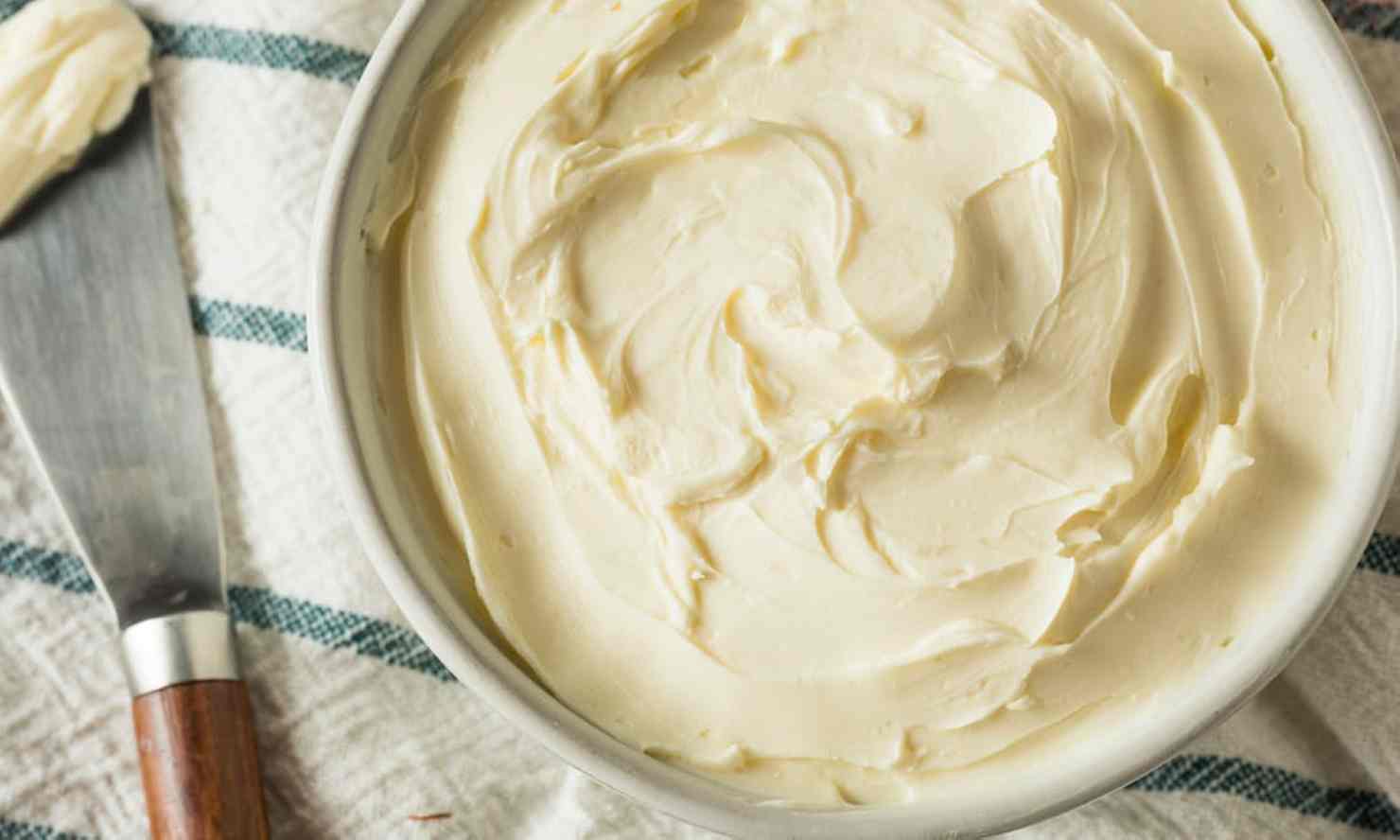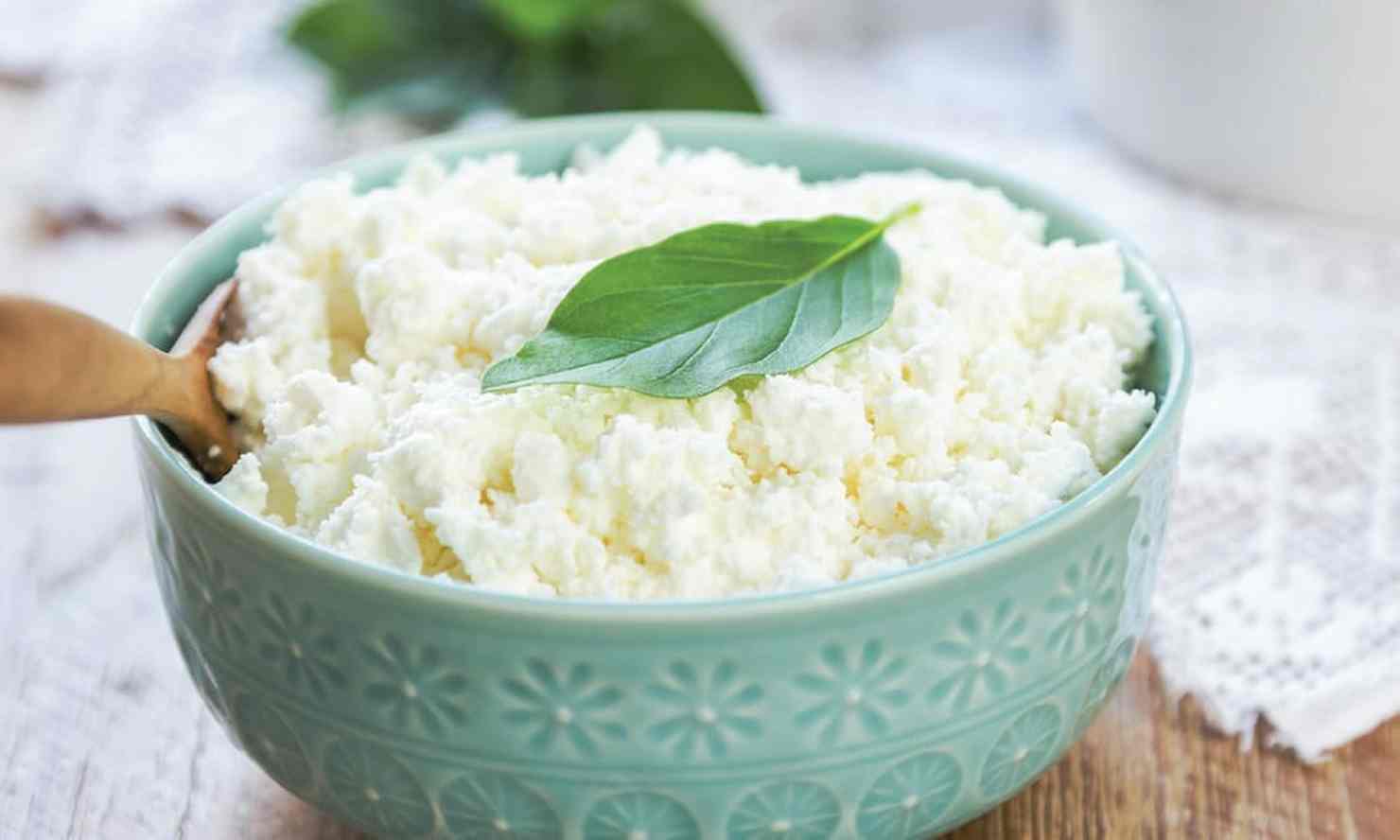
Although it may be most well-known as a popular spread for bagels and breakfast foods, cream cheese is an incredibly versatile ingredient that can be used in a variety of different recipes, and cream cheese nutrition can provide some key vitamins and minerals.
Depending on which type you choose, your favorite schmear may also offer some health benefits as well. In particular, the cream cheese nutrition profile is low in lactose and contains vitamin A, antioxidants and beneficial strains of bacteria.
So is cream cheese healthy? And how can you make and use this delicious ingredient at home?
Here’s what you need to know.
What Is Cream Cheese? How Is It Made?
Cream cheese is a soft type of cheese that is often used as a spread for bagels, sandwiches and wraps. It can also be added to other recipes as well, such as soups, baked goods and pancakes.
How is cream cheese made?
Typically, lactic acid is added to cream, which reduces the pH, causing it to coagulate and separate into curds and whey. The whey protein is then strained out, the curds are heated and other cream cheese ingredients like stabilizers are added.
A clotting enzyme is also sometimes used, which helps improve the texture and firmness of the final product.
Although traditional recipes use milk, cream or a combination of the two, other varieties are also available, such as vegan cream cheese made from non-dairy milk or yogurt.
Nutrition Facts
The amount of protein, fat and carbs in cream cheese can vary quite a bit depending on which variety you select. The light cream cheese nutrition facts, for example, may be much different than the full-fat cream cheese nutrition facts.
Regardless of whether it’s whipped cream cheese nutrition or fat-free cream cheese nutrition, however, most types are high in calories and low in carbs. Many varieties also contain a small amount of certain micronutrients, such as vitamin A, phosphorus and calcium.
Two tablespoons of regular cream cheese contains the following nutrients:
- 96 calories
- 1 gram carbohydrates
- 1.5 grams protein
- 9.5 grams fat
- 354 international units vitamin A (7 percent DV)
- 29.7 milligrams phosphorus (3 percent DV)
- 27.4 milligrams calcium (3 percent DV)
Each serving also contains a small amount of riboflavin, pantothenic acid, vitamin E, vitamin K and folate.
Related: What Is Quark Cheese? Nutrition, Benefits & How to Make It
Benefits/Uses
1. Low in Lactose
Lactose intolerance is a common condition that affects approximately 65 percent of the global population. Symptoms of lactose intolerance are characterized by an inability to digest lactose, a type of milk sugar found in most dairy products, including milk, yogurt and ice cream, which causes digestive issues like diarrhea, cramps and bloating.
Cream cheese is very low in lactose and can be well-tolerated by most people with lactose intolerance. Certain brands also produce lactose-free varieties by adding in the lactase enzyme to aid in digestion.
2. High in Vitamin A
Each serving of this delicious spread contains a good chunk of vitamin A, an essential fat-soluble vitamin that plays a key role in several aspects of health.
Studies show that vitamin A is especially important to immune function and helps regulate cellular immune responses to protect against illness and infection.
It’s also involved in promoting healthy vision. In fact, a deficiency in this key vitamin can cause serious side effects like night blindness, impaired vision and even blindness.
3. Supports Gut Health
During production, certain strains of bacteria, such as lactic acid, are added to enhance the texture of the final product. Also known as probiotics, these beneficial strains of bacteria can help support gut health, reduce inflammation and increase nutrient absorption.
Keep in mind, however, that not all types contains probiotics, and many products are treated with heat, which can destroy bacteria. Look for varieties that contain “live and active cultures” to ensure that your product contains probiotics.
4. Provides Antioxidants
Cream cheese contains several antioxidants and carotenoids, which are compounds that help neutralize harmful free radicals to prevent oxidative stress and cell damage.
Antioxidants are thought to play a central role in health and disease, and some research has found that they may also provide protection against inflammation as well as chronic conditions like cancer, diabetes, autoimmune disorders and heart disease.
5. Versatile and Delicious
Creamy, rich and full of flavor, there are tons of different ways to include this tasty schmear in your diet beyond simply spreading it on your bagel. In fact, this delicious ingredient works in sweet and savory dishes alike and can be used to boost the texture of sauces, soups and baked goods.
Try adding it to mashed potatoes, pasta dishes, fruit tarts or biscuits for an easy way to ramp up the flavor of your favorite foods. Alternatively, mix it with your choice of spices and seasonings like dill, garlic and chives for a simple vegetable dip.
Potential Downsides
For the amount of cream cheese calories in each serving, this popular product is relatively low in protein and other important nutrients like vitamins and minerals.
Other dairy products like milk and cheese are much higher in protein and generally boast a wider array of nutrients, such as phosphorus, calcium and vitamin D. The low-fat cream cheese nutrition profile, on the other hand, contains less than two grams of protein per serving and a small amount of micronutrients, like vitamin A.
Many people also wonder: Does cream cheese go bad? Compared to other types of cheese, particularly the healthiest cheese options, it does have a relatively short shelf life and should be consumed within two weeks after opening. When expired, it may develop mold, a lumpy texture and a sour taste or smell, all of which indicate that it needs to be discarded.
Finally, cream cheese may not be suitable for those with certain dietary restrictions. For example, although it’s low in lactose, it should not be consumed by those with an allergy to dairy products or those following a dairy-free diet.
Recipes and Preparation Methods
Cream cheese is readily available at most major grocery stores, often with a number of different flavors and varieties to choose from.
However, if you’re feeling creative, you can also try making your own at home to put a healthy spin on your favorite recipes. Detailed instructions are available for how to make cream cheese from raw milk, how to make cream cheese from yogurt or how to whip up your own batch of homemade cream cheese with heavy cream.
Although commercial varieties are prepared with a starter culture of bacteria, you can actually just use an acid, such as lemon juice, to coagulate the cream. Then, add your favorite spices to the mix to enhance the flavor.
There are many different ways to use cream cheese for baking or cooking. It makes a great addition to soups, sauces, cookies and tarts, as well as pancakes, sandwiches and wraps.
Of course, the most popular use for softened cream cheese is cheesecake, a popular dessert notorious for its tangy taste and creamy texture. To cut back on the calories and increase the protein content of this decadent dessert, you can even opt to use a substitute for cream cheese in cheesecake.
Instead of using the full amount of cream cheese for cheesecake, try mixing it with a bit of ricotta, Greek yogurt or cottage cheese nutrition instead to give your recipe a healthy twist.
Need some ideas for other ways to use this delicious dairy product? Here are a few cream cheese recipes to help get you going:
- Cream Cheese Frosting
- Vegan Cream Cheese
- High-Fat, Low-Carb Pancakes
- Greek Yogurt Cheesecake
- Bagel with Lox and Cream Cheese
Conclusion
- What is cream cheese? Cream cheese is a type of soft cheese that is made from cream that has been coagulated, strained and treated with certain enzymes and additives.
- The exact amount of cream cheese nutrition in 100 grams can vary quite a bit depending on the specific type, but most varieties are high in calories and low in carbs and protein.
- It’s low in lactose and contains vitamin A, antioxidants and beneficial strains of bacteria that may help promote gut health.
- However, it’s also high in calories and relatively low in micronutrients. It also has a short shelf life and may not be suitable for those with certain dietary restrictions.
- In addition to simply using it on your bagel, there are plenty of delicious cream cheese recipes available and interesting ways to use this versatile ingredient in soups, sandwiches, baked goods and desserts.





